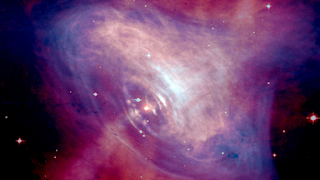You may have heard of an asteroid approaching Earth 18 times the size of a platypus, or perhaps of an asteroid the size of 33 armadillos, or even one the size of 22 tuna fish.
These bizarre comparisons are the invention of Jerusalem Post journalist Aaron Reich (who describes himself as the "inventor of the giraffe scale"), but real astronomers sometimes measure celestial bodies in absolutely bizarre units.
The idea of a planet with a mass of 85% of Earth's mass seems straightforward. But what about a pulsating wind nebula with a brightness of a few milliCrab? This is where things get weird.
Why do astronomers use such strange units?
The basic problem is that a lot of things in space are too big for our familiar units.
Consider the star Betelgeuse: its radius is 83,000 Earth radii, or 764 times the Sun's radius. So, if we want to talk about the size of Betelgeuse, it is more appropriate to use the radius of the Sun as a unit, rather than the radius of the Earth (or describe it as 632 billion Astros).
And if we wanted to measure how heavy an asteroid was, we could do so with beauty — but in space we're more interested in mass than weight. Mass is the measure of how much stuff something is made of.
On Earth, the weight of an object, such as an Astro, depends on the Astro's mass and the force of gravity pulling it to Earth.
And we can think of weight in terms of how hard it was to lift the 18 kilogram Astros off the ground. It would be easy to do on Earth, even easier somewhere with lower gravity like the Moon, and much more difficult somewhere with higher gravity like Jupiter.
An amazing scientific discovery of how birds feed during mass migrations across continents
On the other hand, Astro's mass is how much stuff it's made of - and it's the same no matter what planet it's on.
Astronomers use the Earth and the Sun as manual units of mass. For example, the Andromeda galaxy has about three trillion times the mass of the Sun (or 3 x 1041 - that's 3 followed by 41 zeros - Astros).
Astronomical units
Astronomers also use comparisons to measure how far apart objects are. It separates the sun from the earth by 149 million kilometers, and we call this distance a name: an astronomical unit (AU).
For a more stable unit of distance, we use a parsec, short for "parallax second", and if you recall trigonometry, this is the length of the hypotenuse when the angle is 1 arcsecond (1/3600 of a degree) and the "opposite" side of the triangle is 1AU.
A parsec is handy for measuring larger distances because 1 parsec = 206265 AU (astronomical unit). For example, the center of our galaxy, the Milky Way, is located about 8,000 parsecs from Earth, or 1.6 million astronomical units (AU).
And if we want to measure how bright something is, astronomical units get even weirder. In the second century BC, the ancient Greek astronomer Hipparchus looked at space and gave the brightest stars a value of 1 and the weakest stars a value of 6.
Notice here that the brighter star has a lower number. We call these brightness values “magnitudes.” The apparent magnitude of the Sun is -26!. Each step in magnitude is 2.512 times the difference in brightness.
The light that we see with our eyes is, for obvious reasons, called "visible" light. The light we use to take pictures of your bones is called x-ray light.
When astronomers use X-ray light to observe the sky, we sometimes measure the brightness as a "crab," a rapidly spinning neutron star (or pulsar) in the remnant of a supernova that is very bright when we look at it with our X-ray telescopes. It is so bright in X-ray light that astronomers have been using it to calibrate their telescopes since the 1970s.
So every X-ray astronomer knows how bright a lobster can be. And if we're talking about a specific object, let's say a black hole binary system called GX339-4, which has a brightness of only five thousand "crab" brightness, we'd say it's 5 "milliCrab" bright.
But buyer beware! The brightness of the "crab" varies depending on the energy of the X-ray light you're viewing, and it also changes over time.
Whether we use lions, tigers, or crabs, astronomers make sure to specify which units we use. There is no point in using "armored" unless you make sure the definition is clear.
The report was prepared by Laura Nicole Dressen, Postdoctoral Researcher in Radio Astronomy, University of Sydney.
Tags:
AWARD'S


